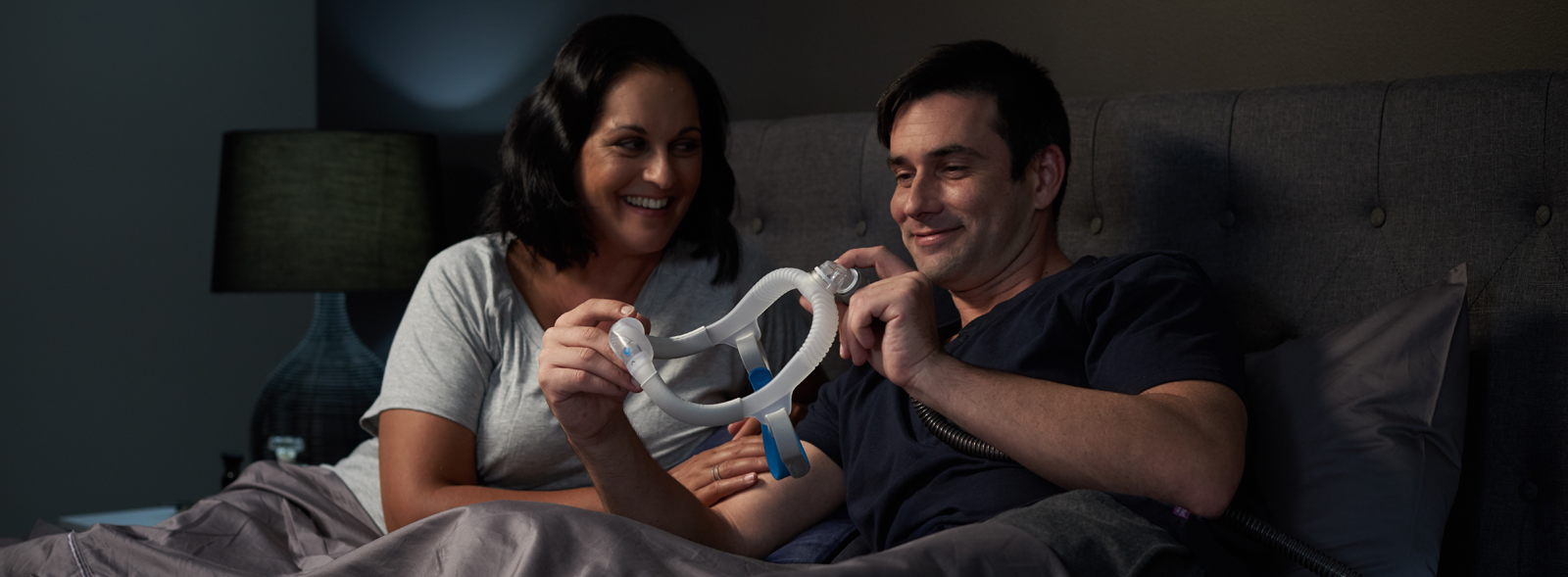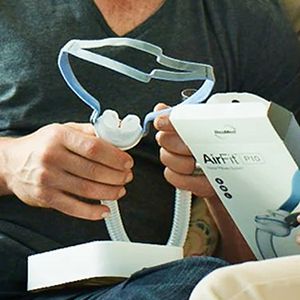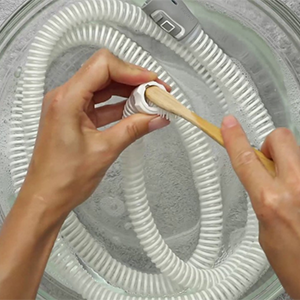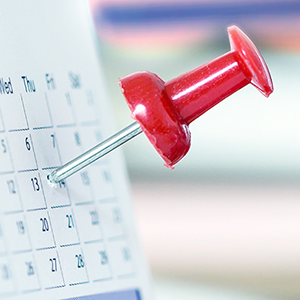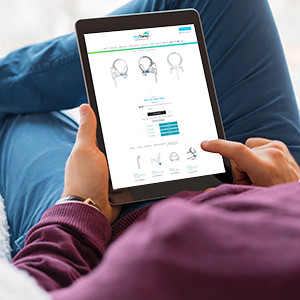Common CPAP Mask Problems
While a CPAP device can offer relief and a better night’s sleep, it’s not without some minor challenges too. Most commonly CPAP users can encounter issues with mask fit and comfort. In time most people get use to wearing a CPAP mask.
Below are the top concerns around CPAP mask comfort, and how you can solve them, so you can get a great night’s sleep. And don’t forget to read your mask user and fitting guide, view our online fitting and troubleshooting videos, and if you have any questions contact the mySleep® team for assistance.
My CPAP mask just never feels quite right
Finding the perfect mask that fits your face well is essential in achieving effective results when using a CPAP machine for Sleep Apnea treatment. That’s because having a CPAP mask that is the correct shape for your face not only ensures comfort to assist with consistent use, but it also makes the mask work correctly each time you sleep.
 Suggestion: Make sure you know how to put your CPAP mask on properly
Suggestion: Make sure you know how to put your CPAP mask on properly
Your mask may not fit you correctly if you are not putting on the headgear on and adjusting it in the right manner. Small adjustments can make all the difference when it comes to comfort and effectiveness, so ask your mySleep Consultant to show you the best way to put your mask on so that it fits perfectly to the contours of your face the way it is designed to do. View our CPAP Mask Fitting Videos.
 Suggestion: Take your time to find the right CPAP mask
Suggestion: Take your time to find the right CPAP mask
It’s worth investing the time to find the right CPAP mask which fits you comfortably and correctly. When you see your mySleep Consultant, they are trained to undertake trial fittings for you to ensure that your mask works well for you. Don’t be shy about being honest and speaking up if your mask doesn’t feel quite right, as only you can know for sure.
 Suggestion: Adjust for facial changes over time
Suggestion: Adjust for facial changes over time
Your face can naturally change over time, through weigh loss or gain, or even the growth of facial hair. If that happens, don’t just put up with the poor fitting mask, as it can cause discomfort and issues with your treatment. Instead, contact your mySleep Consultant and discuss if you can find a mask that fits better.
Hearing or feeling air leaks is something that should not simply be ignored. The way your CPAP machine works to overcome Sleep Apnea each night is by using air pressure to keep your throat open throughout the hours of sleep so that there is a constant stream of oxygen going into your airways. The loss of that air pressure due to a mask leak can therefore mean that your treatment is not working effectively, if at all.
 Suggestion: Check your Mask Fit
Suggestion: Check your Mask Fit
Ensure the mask is fitting your face snugly to create a good seal. On some CPAP devices there is a mask fitting or mask check mode you can use to test if your mask is leaking. Or you can check your results to see if a mask leak has appeared in the previous night’s data.
If you feel that there is a leakage of air, or you find that your untreated Sleep Apnea symptoms unexplainably return, it’s time to get your mySleep Consultant to check your mask to make sure that it’s fitting you well, and not leaking. View our CPAP Mask Fitting Videos.
 Suggestion: Does you mask need to be cleaned?
Suggestion: Does you mask need to be cleaned?
Regularly cleaning and maintenance your CPAP mask is vital to ensure its longevity, hygiene and that fits and seals properly. For more helpful information please see our CPAP Care and Cleaning Guide.
 Suggestion: Consider if your mask or parts need replacing
Suggestion: Consider if your mask or parts need replacing
Over time, masks experience normal wear and tear which can lead to stretching and deterioration. If this is the case, the integrity of the mask may become compromised which can cause leaks. CPAP masks are consumables that should be replaced regularly to ensure that your treatment remains effective every time you wear it. See our CPAP Replacement Schedule for more information.
Some people experience sinus issues, such as a dry or stuffy nose when exposed to the air pressure coming from the CPAP device.
 Suggestion: Use or adjust your Heated Humidifier
Suggestion: Use or adjust your Heated Humidifier
Most CPAP machines now come with a heated humidifier device built in. Humidifiers are designed to increase the moisture levels in the air being delivered to you and to reduce airway and nose dryness. For most people, this greatly reduces the severity, or solves the dryness altogether.
 Suggestion: Try a Heated Tube
Suggestion: Try a Heated Tube
Several CPAP devices now come with heated tubes as standard. These tubes help to minimize condensation, reduce heat loss and therefore will improve the effectiveness of your humidifier. View our Heated CPAP Hoses.
 Suggestion: Talk to your GP or Pharmacist about a Nasal Spray
Suggestion: Talk to your GP or Pharmacist about a Nasal Spray
Nasal sprays are normally just a short term solution, and you should always consult with your GP or Pharmacist first.
Getting used to the continual air pressure being blown through the mask can be difficult. This is normal, especially when you are just beginning treatment. Tolerating the air flow while trying to rest may be a little unusual at first. Also, some people can also find it difficult to exhale against the incoming air pressure.
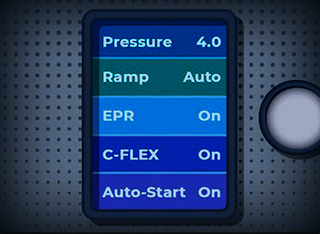
 Suggestion: Use the Sleep Onset Detection or Ramp function
Suggestion: Use the Sleep Onset Detection or Ramp function
Most CPAP devices have a Sleep Onset Detection or Ramp feature where the machine will begin at a low pressure and won’t ramp up to your prescribed pressure until the device detects that you have fallen asleep. This means that, while you are lying in bed with the mask on, you won’t feel the full pressure of the air until after you have drifted off to sleep and you are no longer actively aware when the pressure increases. This can greatly ease the uncomfortable feeling, while ensuring your treatment is effective.
 Suggestion: Use the EPR or C-Flex function
Suggestion: Use the EPR or C-Flex function
Some CPAP devices have a EPR (expiratory pressure relief) or C-Flex function that has a sensor inbuilt to regulate the air pressure based on when you are exhaling. It will then adjust the levels of air pressure to make the breathing out far more comfortable and alleviate any problems you may have.
Sometimes it’s not the mask itself, but the tube behind it that can create the problem. While the tube is an essential part of your treatment because it connects the mask to the CPAP machine, it can often be inconvenient and get in the way during the night.
 Suggestion: Try a Hose Lift
Suggestion: Try a Hose Lift
If you find that you are becoming frustrated by the presence of the tube attached to your mask, we recommend a Hose Lift which extends with your movement to avoid pulling or tugging of the hose or tubing. It provides you with a level of movement and flexibility, so you don’t get caught up in the hose. View our range of CPAP Hose Lifts.
When you first wear a mask on your face, especially while trying to rest, it can feel odd or a little uncomfortable. After all, when it’s in use, your CPAP mask is strapped to your face, blowing air into your airways to help keep them clear all night. This experience may feel unsettling for some users who are new to CPAP therapy.
 Suggestion: Introduce the CPAP Mask in Stages
Suggestion: Introduce the CPAP Mask in Stages
The solution may lie in breaking down the use of the mask into stages so you can get used to it. Instead of immediately strapping the mask to your face and turning on the air, which can be quite intimidating, try simply holding it to your face first. Wait a few moments until you are comfortable with its presence.
Next, turn on the pressurised airstream and slowly acclimatise yourself to that sensation too. After this, the next step is to finally strap the headgear on and see how you feel. By breaking down the introduction of the mask into stages, you can ease yourself into getting comfortable with the mask. Give it a try and see if it helps!
 Suggestion: Wear the CPAP Mask outside of Bed
Suggestion: Wear the CPAP Mask outside of Bed
When in private, you can try wearing your mask while performing daily tasks and chores such as cleaning, watching television or reading. The activity will distract you, while you get more accustomed to the feeling and weight of the mask.
 Suggestion: Take small naps with the CPAP Mask on
Suggestion: Take small naps with the CPAP Mask on
This is another way to get acclimatised to your CPAP mask to reduce the feeling of claustrophobia. Try napping with the CPAP mask on for short periods on a couch or some other location that isn’t your normal bed. The shorter time and different location can allow you to feel more at ease about wearing it and break down the sense of fear.

 Suggestion: Use the Sleep Onset Detection or Ramp function on your CPAP Device
Suggestion: Use the Sleep Onset Detection or Ramp function on your CPAP Device
As mentioned previously, some CPAP devices have a Sleep Onset Detection or Ramp feature. This function waits until it detects that you have fallen asleep before administering your overnight therapy. This means that you can put on your CPAP mask and activate the CPAP device when you get into bed, then relax and slowly drift off to sleep. The machine will begin at a low pressure and won’t ramp up to your prescribed pressure until the device detects that you have fallen asleep. This can reduce the sense of claustrophobia by slowing increasing the air pressure, rather than having it on maximum all at once.
 Suggestion: Try an Alternative Type of CPAP Mask
Suggestion: Try an Alternative Type of CPAP Mask
For some patients, the mask’s design and size can be a little intimidating. This is more commonly true for full-face masks, because it covers a lot of your face while being a little heavier than the other mask options.
If this is happening to you, we often recommend trying a different type of mask, such as a nasal pillow mask. They fit directly into the base of your nose with pillow-type cushions which seal around your nostrils. Many people prefer the nasal pillow masks as they are smaller, lighter and quieter. See some options here https://www.mysleep.com.au/nasal-pillow-masks
These mask designs are ultimately less intrusive and make a user feel more at ease than the larger mask types, and many find they can overcome their initial claustrophobia by switching to nasal pillow CPAP masks.
Frustration with CPAP treatment is unfortunate, but very normal. We understand that it can be disheartening and trying on your patience.
 Suggestion: Focus on the Benefits
Suggestion: Focus on the Benefits
Frustration is a state of mind, tracking the benefits you are receiving from your treatment and discussing this with those around you who may also be experiencing the benefits, such as partner, family and colleagues, will help keep you on track and commited to continuing with your therapy.
We have many long term users of CPAP therapy who will vouch for the worthiness of ongoing treatment. Often it is just a case of getting used to wearing a mask, and this will become more normal and less irritating over time.
Focusing on the Positive Aspects of your CPAP Treatment
Focusing on the positive health benefits of your treatment over the inconvenience of the mask will help tip the scales in your mind of why you are doing this every night. While this sounds like a trivial solution, it really isn’t.
By focusing on how much better you feel each day after a solid night’s sleep with the CPAP machine, versus how you were before the treatment will help reinforce to yourself why you are doing this in the first place.
Need some help with your Mask? Speak to mySleep®
If you have tried these suggestions above, but you are still having issues with claustrophobia with your mask and tube piece, speak to mySleep about your issues. Our trained staff will be able to suggest some alternatives. Contact us today on 1300 605 700 or via our Contact Page

Your Sleep Health Journey


